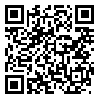Volume 20, Issue 1 (Spring 2023)
bloodj 2023, 20(1): 44-52 |
Back to browse issues page
Download citation:
BibTeX | RIS | EndNote | Medlars | ProCite | Reference Manager | RefWorks
Send citation to:



BibTeX | RIS | EndNote | Medlars | ProCite | Reference Manager | RefWorks
Send citation to:
Farjadi A, Masoomizadeh S, Andashti B. Association study of RBC indices with Beta globin gene mutations in beta thalassemia carriers in Khuzestan province. bloodj 2023; 20 (1) :44-52
URL: http://bloodjournal.ir/article-1-1469-en.html
URL: http://bloodjournal.ir/article-1-1469-en.html
Abstract: (1384 Views)
Abstract
Background and Objectives
Thalassemia is the most common monogenic disease worldwide inherited in autosomal recessive manner. Beta-thalassemia is caused by mutations in beta-globin gene. It is characterized by reduction in red blood cell indices including low MCV, low MCH, high RBC count, low HbA1 and high HbA2. Considering these symptoms, finding a relation between erythrocyte indices and kind of mutations can be used as a rapid method in mutation diagnosis and initial screening of carriers.
Materials and Methods
In this descriptive-analytical study after DNA extraction from 200 beta- thalassemia minors in Khuzestan province by salting out method, we amplified and sequenced beta-globin gene by Sanger sequencing. Finally, we analyzed statistically the beta-globin gene mutations and erythrocyte indices association by SPSS.
Results
Our results showed that IVSII-1(G > A) is the most common mutation with 22.5% frequency in this population of beta-thalassemia carriers. We found that MCV index variations have a meaningful association with beta-globin gene mutations and the highest mean of MCV (65.4 ± 3.7) was observed in IVSI-110(G > A) mutation.
Conclusions
The results comply with many other studies performed in this field and can be used for rapid detection of mutation in carrier parents and prenatal diagnosis.
Background and Objectives
Thalassemia is the most common monogenic disease worldwide inherited in autosomal recessive manner. Beta-thalassemia is caused by mutations in beta-globin gene. It is characterized by reduction in red blood cell indices including low MCV, low MCH, high RBC count, low HbA1 and high HbA2. Considering these symptoms, finding a relation between erythrocyte indices and kind of mutations can be used as a rapid method in mutation diagnosis and initial screening of carriers.
Materials and Methods
In this descriptive-analytical study after DNA extraction from 200 beta- thalassemia minors in Khuzestan province by salting out method, we amplified and sequenced beta-globin gene by Sanger sequencing. Finally, we analyzed statistically the beta-globin gene mutations and erythrocyte indices association by SPSS.
Results
Our results showed that IVSII-1(G > A) is the most common mutation with 22.5% frequency in this population of beta-thalassemia carriers. We found that MCV index variations have a meaningful association with beta-globin gene mutations and the highest mean of MCV (65.4 ± 3.7) was observed in IVSI-110(G > A) mutation.
Conclusions
The results comply with many other studies performed in this field and can be used for rapid detection of mutation in carrier parents and prenatal diagnosis.
Send email to the article author
| Rights and permissions | |
 |
This work is licensed under a Creative Commons Attribution-NonCommercial 4.0 International License. |






